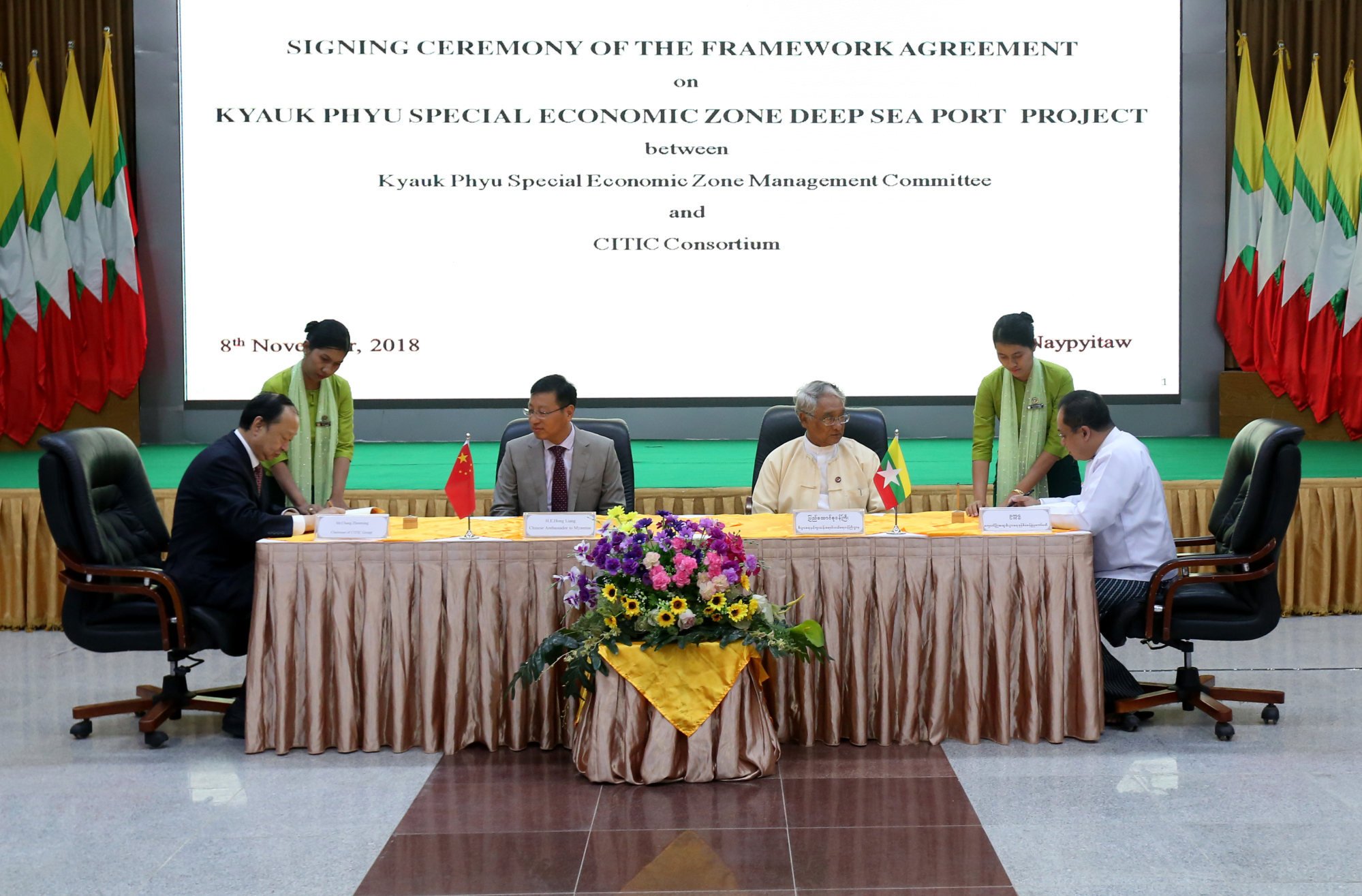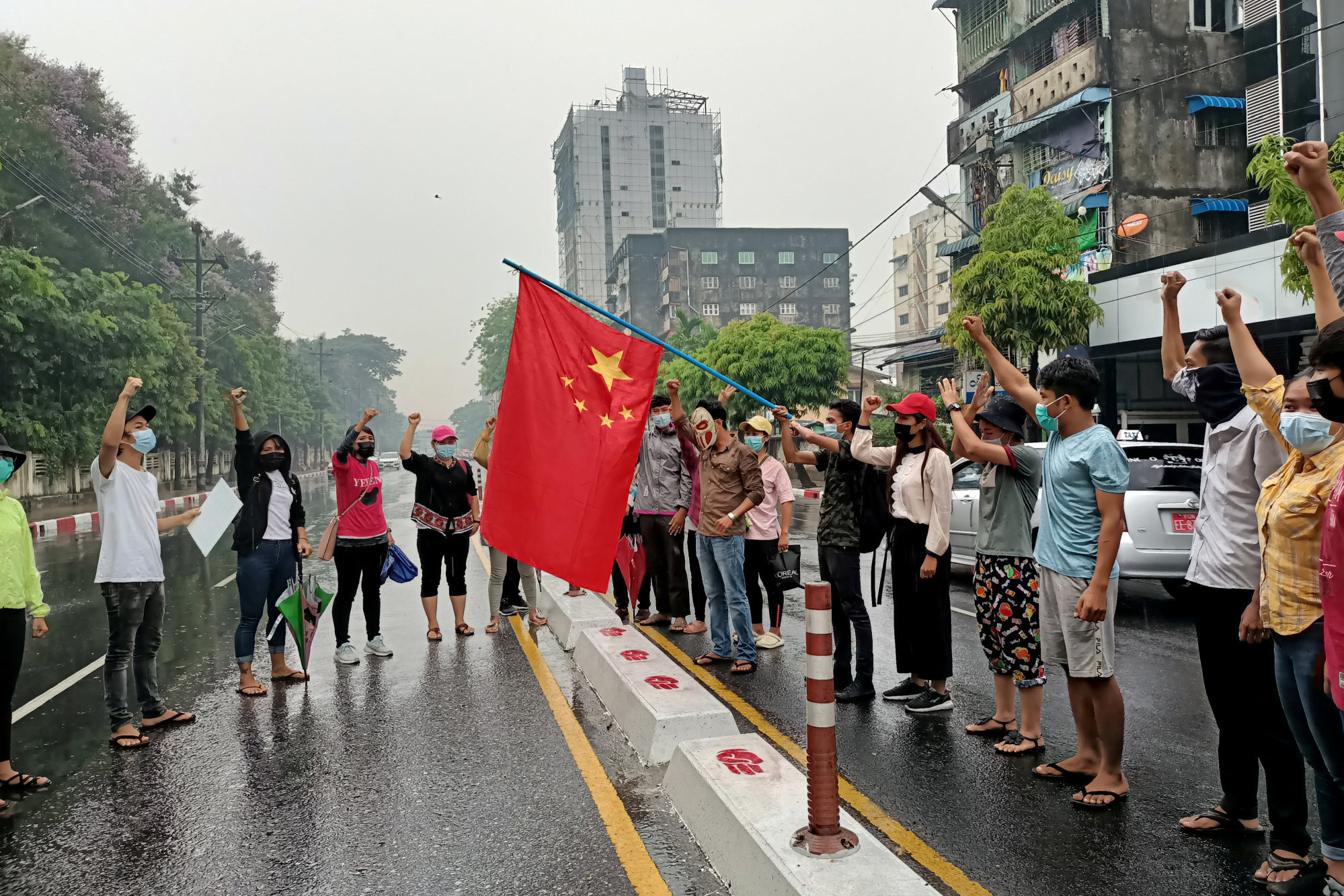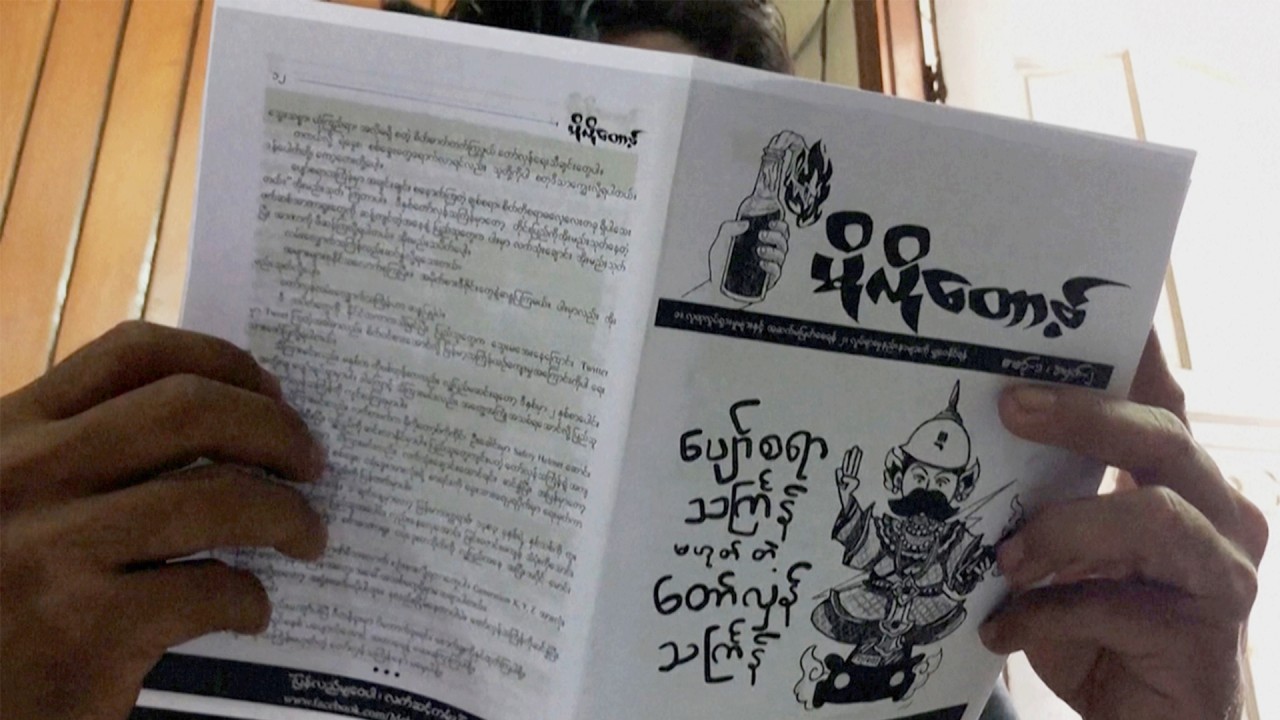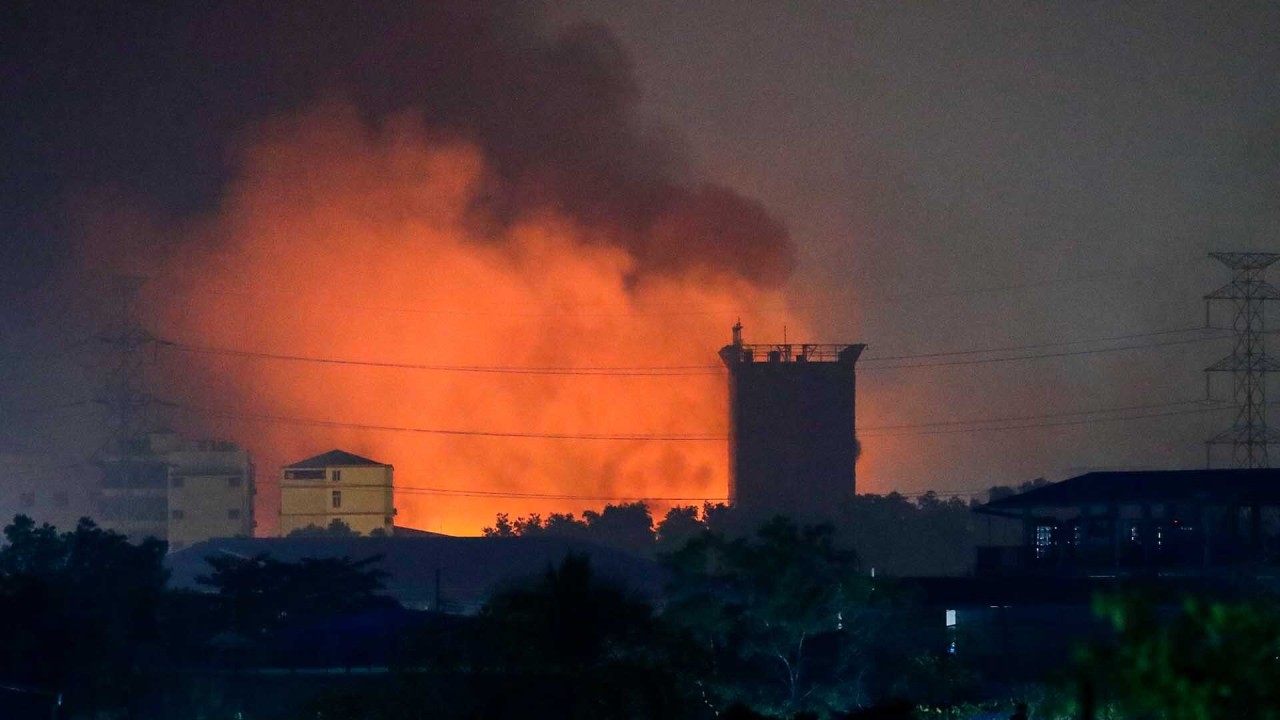
How will Covid-19 and the coup affect China’s belt and road investments in Myanmar and Southeast Asia?
- The initiative is likely to remain a cornerstone of Beijing’s foreign and economic policies, with energy and infrastructure investments a key priority
- However, Myanmar demonstrates that potential environmental, social and governance risks associated with megaprojects could be a long-term concern
Growing infrastructure and investment gap
Infrastructure investment is crucial to the economic growth and development of Asean member states. According to the Asian Development Bank (ADB), US$3 trillion of climate-adjusted investments will be needed from 2016 to 2030 to maintain the current development momentum in Southeast Asia. Although these investment needs vary by sector, energy is the largest, accounting for 56 per cent of the total projected investment need, followed by transport’s 32 per cent.
However, it is difficult for existing financial institutions, including the World Bank and the ADB, to fill this funding gap. ADB data indicates that there is an annual investment need of US$210 billion, but infrastructure spending in the region was only US$55 billion in 2018. This gap is set to increase due to the ripple effect of Covid-19 on Southeast Asian economies.
In general, to meet their growth objectives, Asean member states will have to attract more infrastructure investment, especially in their energy sectors. However, according to the Brookings Institute, traditional Western investments in Southeast Asia are either not keeping up with the region’s needs or are turning away from infrastructure. Although the barriers to investment in Southeast Asian infrastructure are the result of many factors, the most prominent ones are environmental, social and governance (ESG) risks.
This gap leaves room for more belt and road investment in Southeast Asia. These outward investments under the initiative are also important in addressing a wide range of challenges faced by China, including slumping economic growth, domestic overcapacity and overproduction, the relatively backward development of western China, and the political instability and security of “neighbourhood” regions near China.
Expats from Taiwan, Hong Kong among those deciding whether to leave Myanmar
The growing role of Asean in the Belt and Road Initiative
While Southeast Asia appears to be a more friendly market destination for China under the current geopolitical environment, China likewise, through its early industrial resumption, has emerged as a strong economic partner during the pandemic. Therefore, both Asean and China have emphasised China-Asean economic cooperation as a means to spur their economic recovery.

Risks associated with megaprojects: a case study of the China-Myanmar Economic Corridor
China and Myanmar first signed the China-Myanmar Economic Corridor (CMEC) agreement as part of the belt and road plan in 2017. This agreement encompasses a number of infrastructure projects that strategically connect the oil trade from the Indian Ocean to China’s Yunnan province via Myanmar. Key infrastructure investments in the CMEC include a deep water port, several large-scale energy and transport projects, and the Kyaukphyu Special Economic Zone (SEZ).
While there has been limited progress due to concerns over the projects’ commercial viability, both sides marked the 70th anniversary of China-Myanmar diplomatic relations last year by signing another 33 bilateral agreements during Chinese President Xi Jinping’s state visit to Myanmar in January to facilitate the implementation of the CMEC, covering projects such as the Muse-Mandalay electric railway and the New Yangon City project.
Russia, China thwarting international response to Myanmar crisis: EU chief
In general, Beijing expects belt and road investment in Myanmar to contribute to energy security, market creation and stability in its “neighbourhood”, staving off an economic slowdown there that could result in social instability and security threats, which could in turn threaten the political stability of Chinese border provinces such as Yunnan. However, from a Myanmar perspective, other than the above political risks, there are longer-term uncertainties about the commercial viability and ESG risks of the proposed megaprojects.

Kyaukphyu SEZ deep seaport: The SEZ seaport has been the coastal energy terminus of the China-Myanmar oil and gas pipelines running into China’s Yunnan province since 2013. Its development is in line with Beijing’s long-term energy security goal of gaining access to the Indian Ocean via Myanmar and reducing reliance on the Strait of Malacca for oil and gas imports. However, since the China-Myanmar oil and gas pipelines have a limited capacity of approximately 160 million barrels of oil and 12 billion cubic metres of gas per year, it is considered merely a contingency plan.
Muse-Mandalay electric railway: The railway is a megaproject under the CMEC, designed to facilitate the transport of goods between China’s Yunnan province and Myanmar’s Kyaukphyu SEZ. Since the signing of the CMEC agreement in 2017, China and Myanmar have been engaged in negotiations over the terms of the railway. Concerns over the megaproject’s commercial viability, however, remain a key obstacle. The proposed railway passes through highly volatile areas in Northern Shan State in Myanmar. Hence, any implementation of the project will face security and social risks unless the conflict in the area is resolved beforehand.
New Yangon City project: The New Yangon City project aims to build a brand new smart city for a population of 1.2 million people in southern Myanmar by 2050. As part of the CMEC, the US$1.5 billion project was proposed by China Communication Construction Company (CCCC) in 2018. In September 2020, the Myanmar government hired a third-party German consultancy firm to step up scrutiny of the project. This included carrying out a “Swiss challenge” tendering process, which would have brought other international firms into the megacity project to challenge CCCC’s bid. The Chinese developer was recently blacklisted by the United States for its operations in the South China Sea and previously sanctioned by the World Bank from 2011 to 2017 for fraud. This stricter scrutiny of Chinese investment thus demonstrates Myanmar’s desire to mitigate the risks associated with the megaproject, avoid having one single company dominate the project, and prevent itself from incurring unsustainable debt obligations.
Implications for economic recovery and geopolitics
While the belt and road strategy appears to be an economic panacea for Covid-19, the Myanmar case demonstrates that potential ESG risks associated with unsustainable megaprojects could be a long-term concern.
A 2015 report from the Brookings Institute pointed out that Chinese investments were equally distributed between good and poor ESG regions, whereas Western investments usually avoided the latter. Although Chinese investors target countries that Western countries find difficult to invest in, these investors may not always be capable of handling such projects. There will be a surge in FDI in the early stage of such belt and road investments, but the deficit will worsen over the long run if such projects lack sustainability.
Considering the divergences in ESG and security risks, belt and road projects in Asean that involve cross-border or multinational issues could be exposed to delays or disputes. Although the completion of these projects will plug investment gaps in Southeast Asia, unsustainable ones will impose extra burdens on economic recovery. From this perspective, smaller infrastructure projects will likely have higher commercial viability than megaprojects, thus contributing more to spur economic recovery in Southeast Asia.
Engage but don’t recognise Myanmar’s ruling junta, Suu Kyi’s UN envoy tells Asean
There are international debates about whether the belt and road plan will play a complementary role alongside Western investment in Southeast Asia or replace the existing economic institutions. It is unavoidable that the initiative’s investments will compete with existing ones by taking up market share. The plan has also brought its combined commercial strategies and developmental policies to Southeast Asia.
Chinese financing terms – such as low interest rates, flexible requirements and syndicated loans – are more attractive than those of Western investors and competitors. If Chinese lenders offer more competitive and permissive loans than those offered by the existing multilateral lending system, then developing countries that wish to avoid the restrictions of Western lenders may turn to China. Over time, increasing investment under the Belt and Road Initiative has the potential to increase the Southeast Asian economic reliance on China and reshape the existing alliance pattern in the region.
This article first appeared in the publication ISEAS Perspective 2021/39 titled “The Belt and Road Initiative in Southeast Asia after COVID-19: China’s Energy and Infrastructure Investments in Myanmar”.


